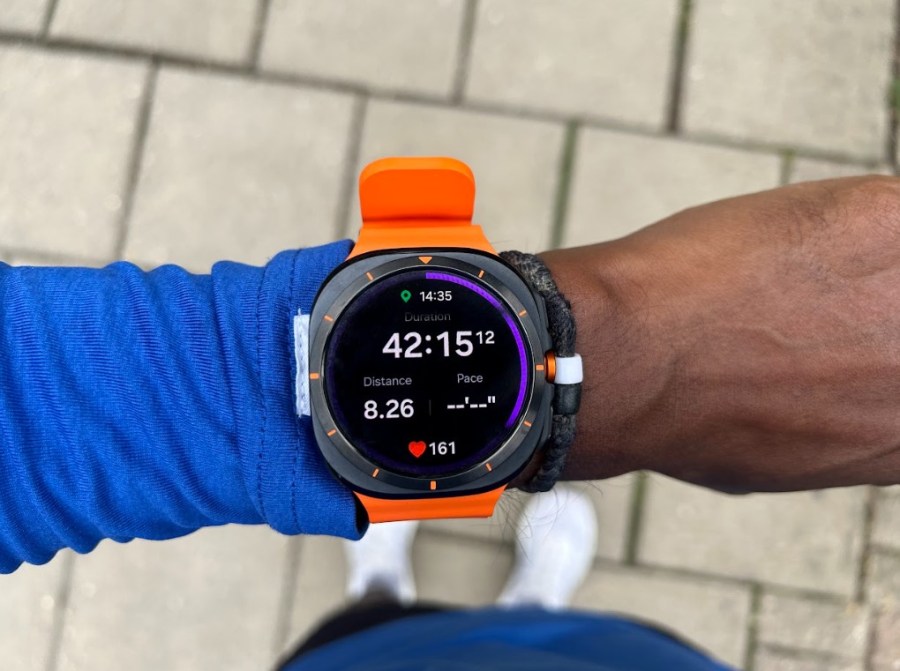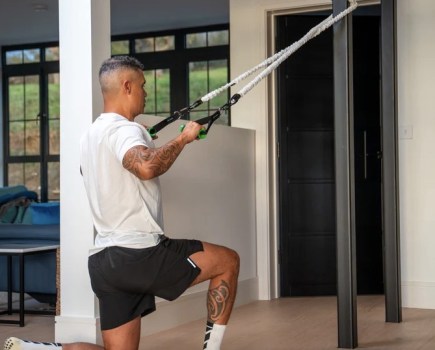I test the Samsung Galaxy Watch Ultra on the trails in Chamonix, in the water and for a race around London to see if this is the dream outdoor and running smartwatch mash-up.
It’s clear that Samsung wants the Samsung Galaxy Watch Ultra to be its answer to Apple’s Watch Ultra 2. So a smartwatch that can accurately track your runs, rides, swims, triathlons and everything in between. All while playing the role of your phone, letting you check in with your WhatsApp messages and taking control of your workout playlists on Spotify. On paper that sounds great. But has Samsung done enough to put it up there with the best running watches?
Men’s Fitness verdict
A smartwatch with enough fitness, navigation and health features to make it wrist-worthy for some, but isn’t the complete package for serious athletes just yet.- Bright AMOLED screen
- Good range of smartwatch features
- Feels light on the wrist
- Sports tracking isn’t on a par with the competition
- Battery life should be longer
- Android only
Why you can trust Men’s Fitness
We spend hours testing every product or service we review, so you can be sure you’re buying the best. Find out more about how we test. Our team of reviewers includes experienced product testers, PTs, nutritionists and fitness writers – as well as the core MF team – who know exactly what sets the best products apart from the rest. The Samsung Galaxy Watch Ultra was tested by experienced run gear tester Mike Sawh.
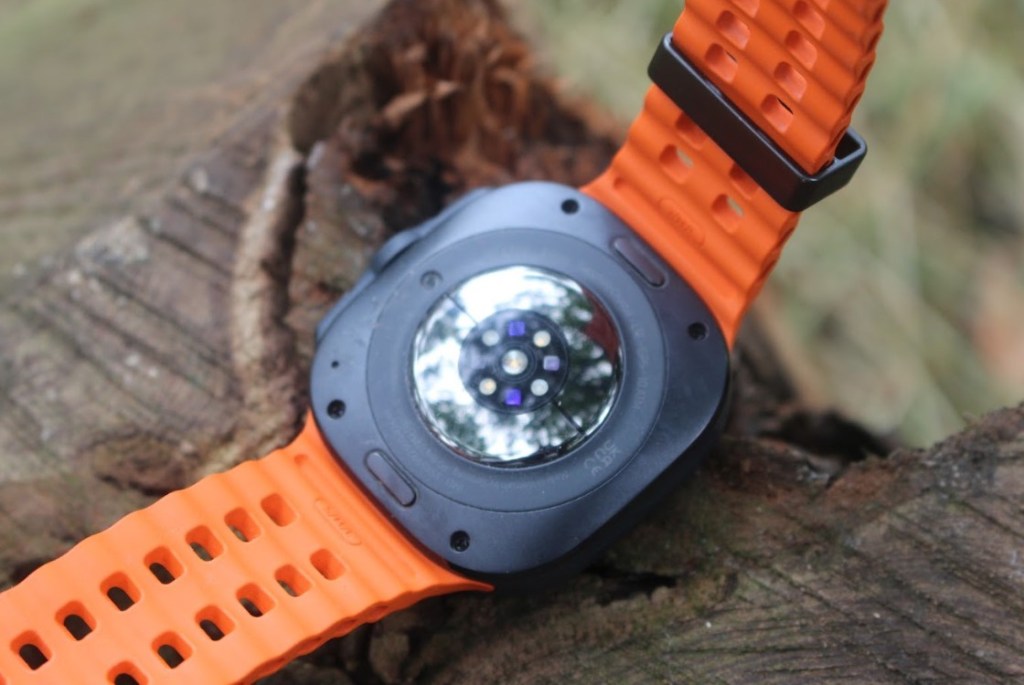
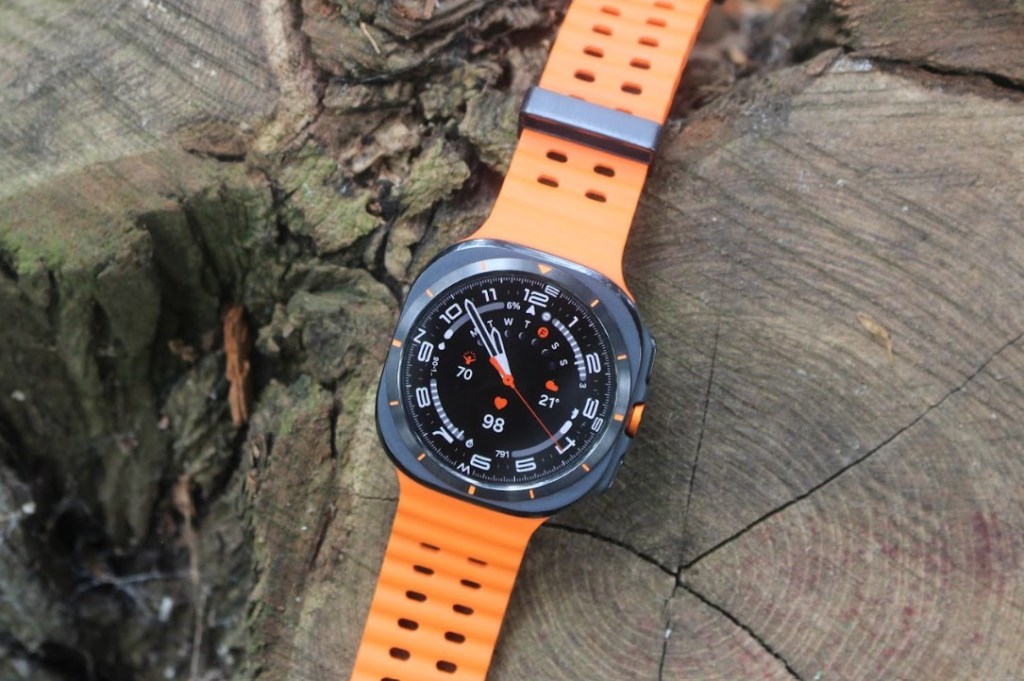
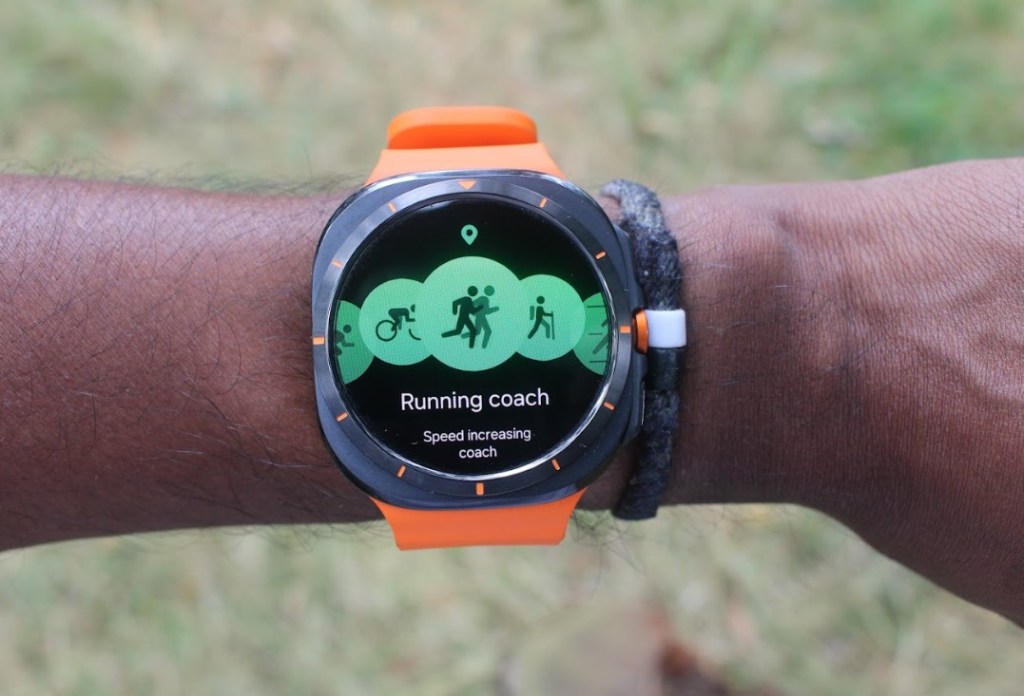
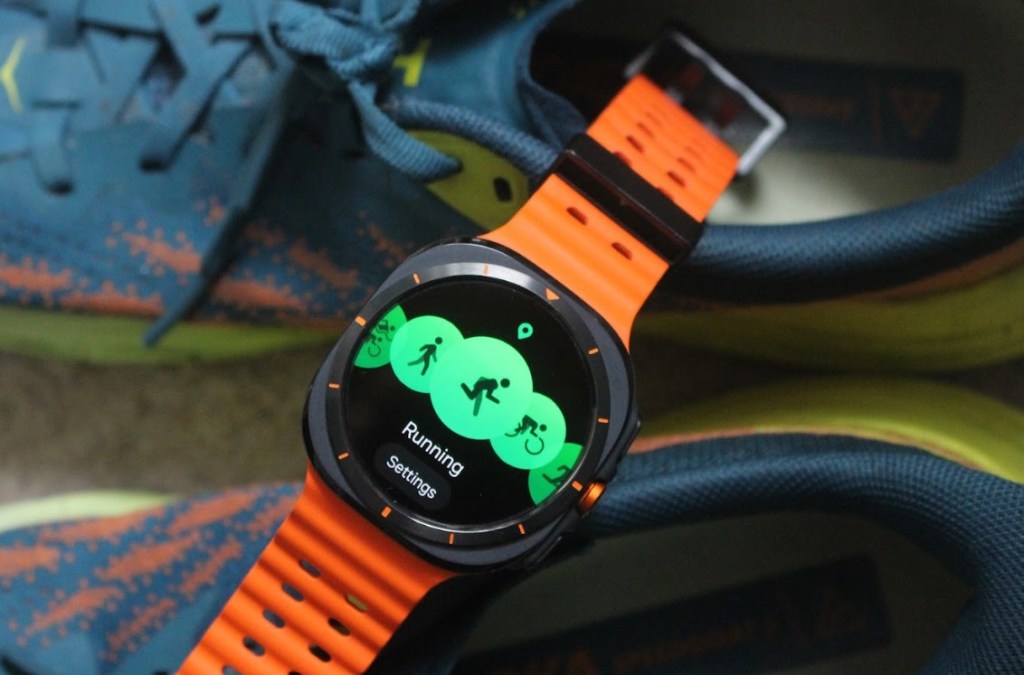

Unlike the excellent Apple Watch Ultra 2, the Galaxy Watch Ultra is made for those with Android phones in their pockets. But like Apple’s Ultra, it doesn’t quite match the big battery numbers you’ll get from similar albeit more expensive watches from Garmin, Polar and Suunto.
Samsung Galaxy Watch Ultra display and navigation
Samsung’s Ultra features a 1.5-inch, 480 x 480 resolution Super AMOLED display. So already you’re getting one of the highest quality screens you’ll find on a smartwatch. So far so good.
It’s colourful, bright and offers an always-on mode to keep the screen on 24/7 just like a regular watch. While the casing is square, the screen inside is a round one and offers up to 3,000 nits brightness, which is the same level of brightness offered on the Apple Watch Ultra 2. It definitely shines brightly, even at night.
The case is a 47mm-sized one, so that’s a similar size to AMOLED rivals like the Garmin Epix Pro. There’s only one model on offer, which uses titanium as opposed to stainless steel. It’s 60.5g weight makes it more manageable and comfortable to wear day and night. My Watch Ultra was matched up with one of Samsung’s Marine bands, which is reminiscent of the Ocean band offered for the Apple Watch Ultra. It’s a sturdy silicone band with some flex that uses a traditional watch buckle to make sure it stays put and rounds out a pretty smart-looking smartwatch.
Samsung Galaxy Watch Ultra controls
Along with that big AMOLED touchscreen to swipe and tap on, Samsung includes three physical buttons, all on the right side of the case. The two at the top and the bottom are pretty standard-looking smartwatch buttons. The one in between is a crown-style button that also doubles up as Samsung’s Quick Action button. So when you give it a press, it will quickly get you to the workout tracking screen or can turn on the onboard torch. Holding it down for five seconds also enables the siren mode to emit an 86-decibel sound to raise the alarm if you get lost.
Samsung’s software, which is a mix of Google’s Wear OS and Samsung’s own interface laid on top, is easy to get to grips with. It’s backed up by Samsung’s new 5 core, 3nm processor, which keeps everything running nice and slick.

Samsung Galaxy Watch Ultra features and battery
In terms of features, you’ve got pretty much everything you’d expect to find on a sports watch from Garmin, Polar or Suunto. It’s built for rugged use having passed military standard testing for things like performing at extreme temperatures and holding up after knocks and vibrations. It’s also safe to be submerged in water up to 100 metres to match the waterproofing of most other premium sports watches.
There’s available sports profiles including core modes like running, cycling and swimming (pool and open water). It also has a dedicated mode for coaching runners with focused sessions on building speed and stamina. There’s a multisport mode to track events like triathlons and duathlons too. Post-workout, it can dish out VO2 Max and sweat loss estimates, as well as heart rate data, and includes Energy Scores. Those aim to tell you when to train or take a rest day. Pure training insights lag a bit behind Garmin and Apple, however.
Samsung Galaxy Watch Ultra GPS
It matches a lot of other AMOLED-packing watches by including dual-frequency GPS. That improves the accuracy of tracking your outdoor movements compared to single-frequency GPS technology used in older sports watches and smartwatches. It accuracy boost should be most noticeable when near tall buildings or densely populated areas. In practice, when I used the Saucony London 10k, which takes place in the heart of London, to compare it to the reliable Apple Watch Ultra 2, Samsung overreported the 10k distance while the Apple Watch was much closer.
I also took it for some trail running on a recent trip to Chamonix against the Garmin Epix Pro. Digging into the GPS traces I found that Apple and Garmin’s watches tracked routes more reliably. It didn’t work out too great for me when I took it open water swimming as well where it failed to register any distance data against a Garmin Forerunner 965.
Things didn’t get much better with the optical heart rate monitor performance. Samsung includes its BioActive sensor, which is capable of tracking heart rate (optical and ECG), blood pressure, blood oxygen and your body composition. You can’t pair external heart rate monitors to the Watch Ultra, which is a shame because when I used it against a heart rate monitor chest straps from Garmin and Wahoo, average and maximum heart rate readings were typically higher, including during that 10k race test.
Samsung Galaxy Watch Ultra navigation
If you’re planning to go for a hike or head out for a trail run with the Galaxy Watch Ultra, Samsung does include some navigation features. These let you upload routes to the watch and get turn-by-turn directions, including when you need to get back home. While the directions are easy to follow from that big AMOLED screen, there isn’t the level of mapping detail or additional mapping modes that you’ll get from AMOLED watches like the Apple Watch Ultra 2, Garmin Epix Pro and Suunto Race among others.
In terms of smartwatch features, you’ve got plenty here to tap into. You’ve got notifications now bolstered with Samsung’s AI-powered suggested replies for messages. You’ve got 32GB of storage to store music you own or from music streaming services like Spotify and there’s LTE connectivity, which means it can operate without your phone. It’s a great smartwatch and is definitely one of the biggest reasons to strap it on.
Battery life, much like the Apple Watch Ultra 2, isn’t on a par with AMOLED sports watches like the Garmin Forerunner 965, Garmin Epix Pro, Polar Vantage V3 and Suunto Race. For day-to-day use, it lasted just up to 2 days for me. When using it in its top GPS accuracy mode, the battery drop was pretty inconsistent. On some hour runs it was as much as 10%; on others it was significantly less. Samsung does include a dedicated power-saving mode, which reduces the accuracy of GPS and heart rate tracking to push you to 48 hours.
Verdict
Bottom line, if you want a smartwatch to last a week before you need to grab a charger, the Samsung Galaxy Watch Ultra won’t be your first choice. Likewise, if GPS accuracy is paramount there are better choices out there. As Samsung’s first true attempt at a dedicated running and outdoor smartwatch, there’s still some work still to be done to place the Galaxy Watch Ultra among the very best running watches. Still, if your after smartwatch features first and foremost, the Galaxy Watch Ultra more than holds its own.
Samsung Galaxy Watch Ultra technical specs
| Display | Super AMOLED |
| Resolution | 480 x 480 |
| Connectivity | Bluetooth + LTE |
| Weight | 60.5g |

